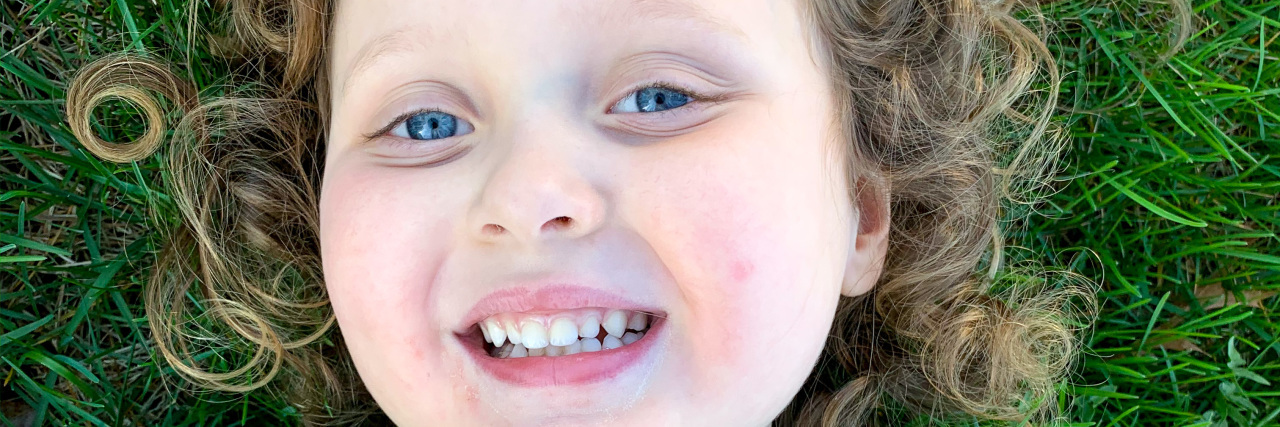What a Visit to the Children's Museum Taught Me About the Reality of Autism Awareness
Being home on lockdown all these weeks, I’ve had a lot of time to think. Hot and heavy on my mind has been this: why are there so many self-proclaimed heroes out there, championing the disabled children (in our case, autism), patting themselves on the back for passing the basketball to the autistic kid or for “sacrificing themselves” and inviting an autistic boy to prom? Yet, for these to be heroic acts, we have to simultaneously acknowledge that we are including the “less than.” “Look at me, including the poor kid who is less than us!”
The month of April houses World Autism Awareness Day. This, I think, is where the root of the problem lies. Who isn’t aware of autism? Who, by now, in 2020, hasn’t heard of autism? Do we really need to become aware of autism, or accepting of it?
Let me tell you a story:
We are in a children’s museum in Raleigh — one of my 3-year-old son’s favorite places. In the upstairs, we come across these really awesome clear tubes that reach toward the ceiling. Noah rushes to a table of multicolored scarves, holds one up to the base of a tube, and watches as it is sucked up, spinning and swirling, before it shoots out the top and comes floating down into his waiting hands. He is squealing and giggling and runs back to do it again.
For my son, this is sensory heaven! He does it over and over and over again. Picking new colors, mixing colors as they go up, bouncing away on his toes, and flapping his hands in delight. Other families come and go all day, while we stay put — playing with these magical, floating scarves.
A family approaches and I watch the father eyeing Noah suspiciously, watching Noah as he tilts his head to the floor to examine the scarves at different angles. In his excitement, Noah grabs a scarf from this child’s hands and shoots it up the tube. (We of course remind him about the biggest toddler swear word “sharing.”) In a huff, the dad shuffles his child away and visits a nearby exhibit.
At this point, I overhear him complaining to his wife about the child who stole his son’s scarf. When his wife asks which child would dare do such a thing, the father waves his hand dismissively toward Noah saying “I don’t know, the one who won’t stop flapping his hands everywhere.” He mimics Noah’s flapping with an eye roll. No explanation needed on how that might sting.
A while later, a little girl about Noah’s age approaches. She is hesitant, unsure, curious. I’m sure she doesn’t know many kids with Noah’s mannerisms. Her mother kneels down and says to her daughter, “Do you see how he’s jumping around and waving his hands? He’s so excited! Why don’t you go say hello!” She smiles at me and I nod my appreciation back to her. Noah pulls the scarves from her hands, as well. And she does the same right back to him. They spend the next few minutes playing together and giggling before this family inevitably moves on through the museum and leaves Noah in his happy stim world of colored scarves.
This is the difference between awareness and acceptance. I’m sure, in another setting, had I asked that father if he knew about autism, he would answer “well, of course!” He might even go as far as to offer his support of some hypothetical autistic child or tell me about his second cousin’s son who’s autistic. But in a real-life setting, when Noah’s autism interfered with his life in some minuscule way, he drew the line. Never mind that this was the happiest we’d seen Noah in weeks. Never mind the real-life struggles Noah faces every single day. This small, minor inconvenience was enough to make him uncomfortable. To make him lash out toward a toddler.
How many times do we say, “of course, we accept and support kids with (insert any disability).” But how often do we actually act on it? How often do we say things like “yeah, that kid is weird!” vs. taking the time to actually understand the “weird” behaviors? How many times have we excluded a “weird” person in our lives because they make us uncomfortable? How often do we take the time to call the mother of the “weird” kid in class to invite them to a birthday party? To ask what we could do to make it easier for that kid to be included? To understand that “weird” isn’t actually weird! That below the face value, there is a real person — a lovable, deserving, worthy person. (And let’s just pray that valuable, gentle soul didn’t hear you passing judgment.)
No, awareness isn’t enough. It’s time to accept. It’s time to realize that Noah flapping his hands is equivalent to how we feel when we arrive at our beach vacation or at our long-awaited concert. To teach our kids that the boy in their class who constantly hums to himself is maybe just expressing his nervousness, much like when we bite our nails. It’s time to be the mother who kneels down and assures her daughter that the autistic boy isn’t actually all that different from her.
This isn’t the only story I have of people making hurtful comments about my son. This isn’t a case of one lone jerk, I promise you. But, it is the only story I have of a stranger taking the time to educate her child. And that, my friends, is the root of the problem.
Happy Autism Acceptance Month, all!

